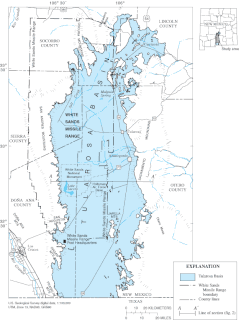 W
WThe United States Army Combat Capabilities Development Command Armaments Center (CCDCAC), or Armaments Center, headquartered at Picatinny Arsenal in New Jersey, is the US Army's primary research and development arm for armament and munitions systems. Besides its Picatinny headquarters, the Armaments Center has three other research facilities, including Benét Laboratories. The Armaments Center works to develop more advanced weapons using technologies such as microwaves, lasers and nanotechnology. The Armaments Center was established in February 2019, when it was aligned with the Army Futures Command along with its senior organization, the Combat Capabilities Development Command. Before February 2019, the Armaments Center was the U.S. Army Armament Research Development and Engineering Center (ARDEC).
 W
WThe United States Army Aviation Applied Technology Directorate (AATD) is a tenant activity located at Fort Eustis, Virginia. It is a directorate of the Aviation Development Directorate under the Aviation and Missile Research, Development, and Engineering Center (AMRDEC), a part of the Research, Development and Engineering Command (RDECOM).
 W
WCamp Fistclench was a U.S. Army research camp on and inside the Greenland Ice Cap 200 miles (320 km) east of Thule Air Base. It was in use from 1957 to 1960. It served to prototype techniques used at the much larger Camp Century.
 W
WThe Cold Regions Research and Engineering Laboratory (CRREL) is a United States Army Corps of Engineers, Engineer Research and Development Center research facility headquartered in Hanover, New Hampshire, that provides scientific and engineering support to the U.S. government and its military with a core emphasis on cold environments. CRREL also provides technical support to non-government customers.
 W
WThe Intelligence and Information Warfare Directorate is a component of the US Army Communications-Electronics RD&E Center, based out of Aberdeen Proving Ground. Consisting of five primary divisions, I2WD forms a Research and Development (R&D) enterprise.
 W
WThe Combat Capabilities Development Command (CCDC) C5ISR Center, formerly the Communications-Electronics RD&E Center (CERDEC), is the United States Army information technologies and integrated systems center. CCDC C5ISR Center is headquartered at Aberdeen Proving Ground in Maryland, with activities at Fort Belvoir in Virginia and Joint Base McGuire-Dix-Lakehurst in New Jersey.
 W
WThe Doriot Climatic Chambers (DCCs) are a pair of very large, highly specialized wind tunnels/environmental chambers located at the U.S. Army’s Soldier Systems Center (SSC) in Natick, Massachusetts. Built in 1952, the Chambers are a unique facility, capable of simulating an extreme range of global weather conditions for the testing of both the physical properties of military equipment and the physiology and adaptations of human subjects.
 W
WDugway Proving Ground (DPG) is a U.S. Army facility established in 1942 to test biological and chemical weapons, located about 85 mi (137 km) southwest of Salt Lake City, Utah, United States, and 13 mi (21 km) south of the 2,624 sq mi (6,800 km2) Utah Test and Training Range forming the largest overland special use airspace in the United States.
 W
WThe United States Army Engineer Research and Development Laboratory aka ERDL, was a United States Army Corps of Engineers research facility located at Fort Belvoir, Virginia.
 W
WThe United States Army Heritage and Education Center (USAHEC), at Carlisle Barracks, Pennsylvania, is the U.S. Army's primary historical research facility. Formed in 1999 and reorganized in 2013, the center consists of the Military History Institute (MHI), the Army Heritage Museum (AHM), the Historical Services Division (HSD), Visitor and Education Services (VES), the U.S. Army War College Library, and Collections Management (CM). The U.S. Army Heritage and Education Center is part of the United States Army War College, but has its own 56-acre (230,000 m2) campus.
 W
WMalta Test Station, located in Malta, New York, is a former US Army fuel and explosives testing facility. It was established in 1945 and used to test rocket engines for the US Army's "Project Hermes", new fuels and explosives. It has also been used for atomic energy research.
 W
WUnited States Army Materiel Systems Analysis Activity (AMSAA) is an analysis organization of the United States Army. AMSAA's overall goal is to provide soldiers with the best U.S. Army materiel possible. AMSAA supports the U.S. Army by conducting systems and engineering analyses to support decisions on technology, materiel acquisitions, and the designing, developing and sustaining of U.S. Army weapon systems.
 W
WThe Army Research Laboratory (ARL) is the U.S. Army's corporate research laboratory. ARL is headquartered at the Adelphi Laboratory Center (ALC) in Adelphi, Maryland. Its largest single site is at Aberdeen Proving Ground, Maryland. Other major ARL locations include Research Triangle Park, North Carolina, White Sands Missile Range, New Mexico, Orlando, Florida, and NASA's Glenn Research Center, Ohio and Langley Research Center, Virginia. ARL also has regional sites in Los Angeles, Chicago, College Station, TX, and Boston.
 W
WThe Combat Capabilities Development Command, (CCDC) is a subordinate command of the U.S. Army Futures Command. RDECOM was tasked with "creating, integrating, and delivering technology-enabled solutions" to the U.S. Army. Headquartered at Aberdeen Proving Ground in Maryland, RDECOM employed more than 13,000 scientists, engineers, researchers, and support personnel working at six major RDE centers and at the U.S. Army Research Laboratory, providing nearly all of the Army's basic and applied research and development services, including in collaboration with other branches of the armed forces and through a network of more than a thousand academic, industrial, and international partners.
 W
WThe United States Army Simulation and Training Technology Center (STTC) provides the United States Department of Defense and United States Department of Homeland Security with applied research to develop simulation technologies, build on current simulation knowledge, and understand system of systems environments where human, agent, and teams are involved.
 W
WU.S. Army Redstone Test Center, or RTC, is subordinate organization to the United States Army Test and Evaluation Command, a direct reporting unit of the United States Army responsible for developmental testing, independent evaluations, assessments, and experiments of Army aviation, missiles and sensor equipment.
 W
WThe U.S. Army Combat Capabilities Development Command Aviation & Missile Center (AvMC), formerly known as the U.S. Army Aviation and Missile Research, Development and Engineering Center (AMRDEC), a part of the U.S. Army Research, Development, and Engineering Command (RDECOM) — now CCDC, is primarily a civilian organization tasked to provide research, development and engineering technology and services to support U.S. Army aviation and missile platforms. AvMC conducts research, promotes development, engineering and simulation laboratories and facilities used to develop and improve aviation and missile components, subsystems and systems.
 W
WWhite Sands Missile Range (WSMR) is a military testing area operated by the United States Army. The range was originally established as the White Sands Proving Ground on July 9, 1945.